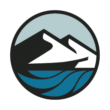By Jeremy Johnson
This article is part of a series highlighting the vibrant people and industries that make up the working waterfronts of the Maritime Washington National Heritage Area. Dive into more stories from Westport with the Grays Harbor Bar Pilots and Seafood Connection.
On a warm September morning, the crew at Brady’s Oysters begins to arrive. The sun rises above the Elk River, and the tide comes in at its own pace. Today, the work promises to be quick, if not warm, under a cloudless sky.
Waiting for high tide, crew members Fidel and Raul do light work around the cannery and farm. Operations manager Mark Ballo signals the time, and a small skiff is launched into the water using a forklift. Ballo rows the crew out to a floating barge full of oyster seed—young oysters ready for transplanting. The first task is to spread the seed onto the tidelands, followed by a short transit to the oysters that are ready for harvest. Each line of suspended Pacific oysters has a small buoy the crew uses to haul the shellfish onto the barge.
A hooked pole is used to grab the floating buoy, and the attached rope is dropped into a rotating drum to help pull the oyster-laden rope onto the deck. The line is cut into sections as it’s hoisted aboard, and the strands of oyster are tossed into a pile. The crew works quickly and efficiently, having done this hundreds, if not thousands, of times. Soon the bed is harvested, and the barge motors back to the shell-road at Brady’s Oysters.
In 1970, after working as an employee in other canneries, Brady Engvall decided to strike out on his own to “do [his] own thing, make [his] own hours, even if it’s seven days a week.” He leased three small parcels on Whitcomb Flats for his oyster beds and opened a retail store in downtown Westport.
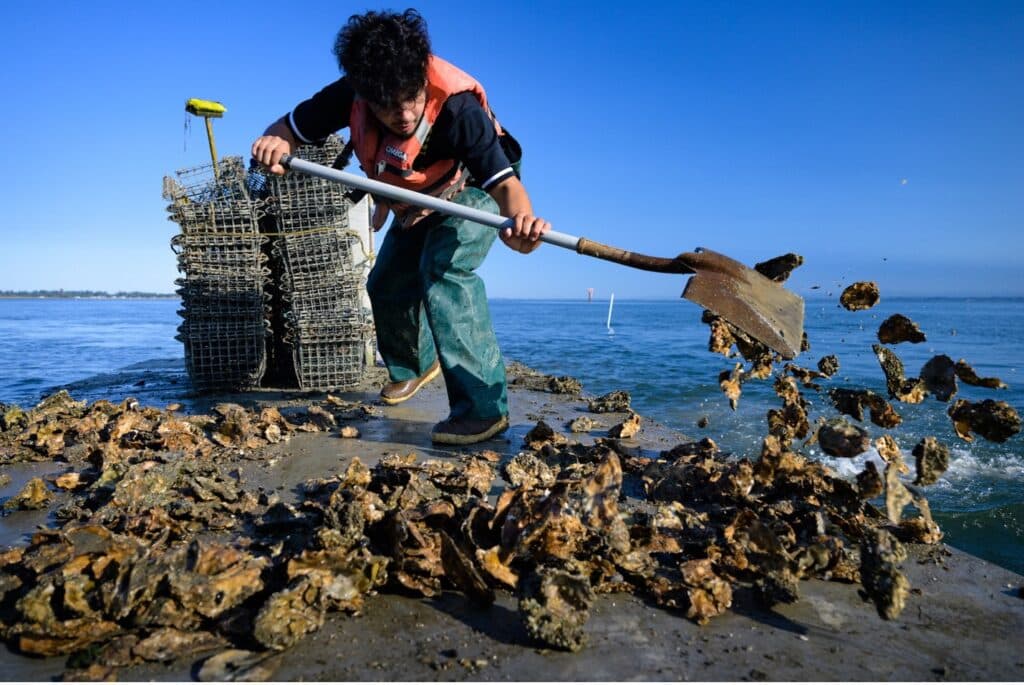
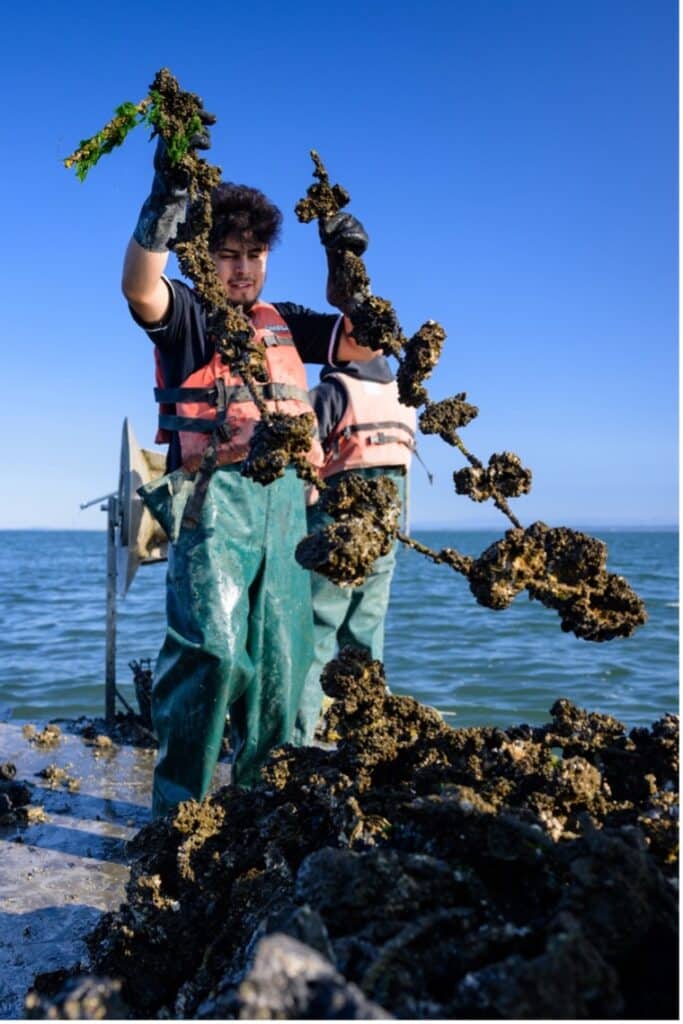
Brady had learned that the typical growing method at the time—placing the growing oysters directly on the mud—wouldn’t work on a small plot and wouldn’t produce a high enough yield to be profitable.
Inspired by the Japanese method of draping ropes of oyster culture off a tall pole, Engvall planted hundreds of short cedar stakes in the mud. Long lines with sewn-in oyster culture were then stapled to the top of the stake, suspending them above the mud. What he invented was a suspended culture longline that solved many of the problems of growing Pacific oysters in Grays Harbor, especially on smaller plots. His method later caught on with the larger canneries.
After a deep dredge of Grays Harbor in 1981 to allow safe transit of larger shipping traffic to Aberdeen, Whitcomb Flats began to disappear. Powerful winter storms more easily pushed through the channel and changed the hydrodynamics of the bay. Brady’s Oysters had to move their plots.
During the process of relocating the oyster beds to the mouth of the Elk River in 1980, Brady suffered from a flu-induced fever. He pulled over on Oyster Place Road at Sands Crab Pot, a small seafood market and the site of his childhood home, and laid down on a warm beach log. Nearby, the new Highway 105 bridge that went over the river was humming with traffic. Whoosh. Whoosh. Whoosh. Truck and car passed over the bridge.
Brady saw an opportunity. Before Sands Crab Pot, it was The Crab Pot, owned by Brady’s parents. He talked to the owners, Bob and Mildred Sands, and offered to buy. Turns out, the owners were looking to retire.
Brady and his family bought the property and moved their operation from downtown Westport, now growing their oyster plots at the mouth of the Elk River. They built a cannery and later a retail store. The location was perfect. The Engvalls could live and work on the same property, running both the farm and store all from the same location, while enjoying increased customer traffic from the new highway.
In 1993, Brady’s daughter, Kristi Ballo, came home from Seattle to take over the operation with her husband Mark. Brady semi-retired, and Mark started working the farm. While Brady worked through the challenges of starting a new business and moving the whole operation, the Ballos have faced their own setbacks.
Digging for razor clams often brings many visitors to Westport; however, in the past 30 years, more frequent red tides (a harmful algae bloom) have closed razor clamming, dramatically reducing the store’s foot traffic. Burrowing shrimp (ghost shrimp) have destroyed oyster habitat with no current approved mitigation control. Ocean acidification from global warming has been noticeably reducing the farm’s yield.
Yet the oysters can prove resilient “if you can keep the starfish off them, keep them from sinking, and be lucky enough to keep out the bad phytoplankton that clogs the gut of the oyster,” Mark says.
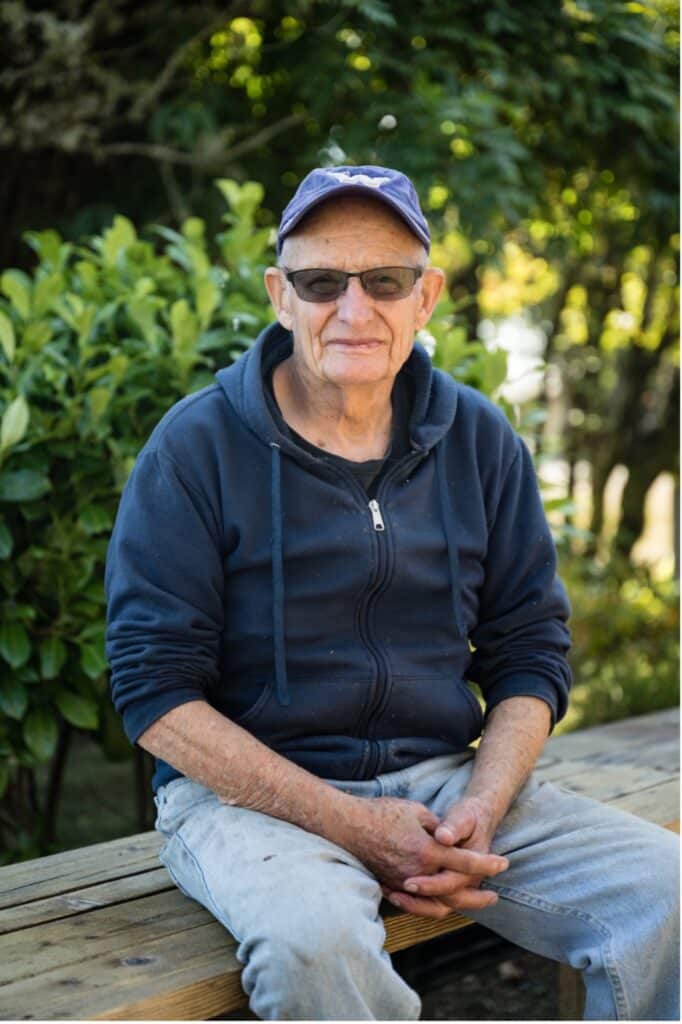
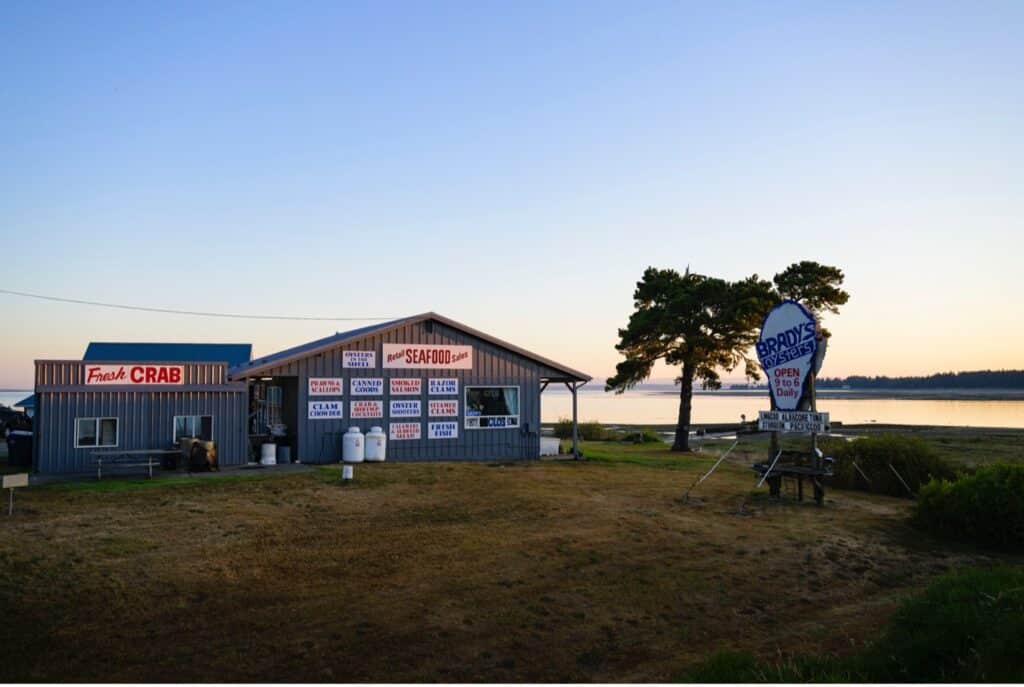
During the summer of 2022, as people emerged from the pandemic, lifelong customers of Brady’s Oysters seemed to make a special effort to share how important Brady’s Oysters was to them. “We’re so glad you’re still here” was a frequent refrain, as people emerged from their cars with smiles on their faces. “The best part for me is the customers. They’re very appreciative of what you do,” remarks Kristi.
“You have to be a stubborn son-of-a-bitch to do this,” Mark noted. He described the kind of person that makes a good oyster farmer: “People who like to be outdoors, who don’t mind wearing rain gear, like a great deal of freedom (and frustration), being your own boss, and like having pets (oysters).”

